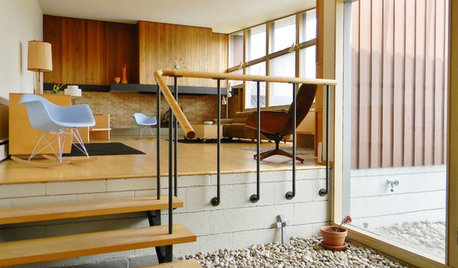Heat Pump Amp Draw Question
newtoaz
14 years ago
Related Stories

FLOORSIs Radiant Heating or Cooling Right for You?
Questions to ask before you go for one of these temperature systems in your floors or walls (yes, walls)
Full Story
FLOORSWhat to Ask When Considering Heated Floors
These questions can help you decide if radiant floor heating is right for you — and what your options are
Full Story
LIGHTING5 Questions to Ask for the Best Room Lighting
Get your overhead, task and accent lighting right for decorative beauty, less eyestrain and a focus exactly where you want
Full Story
FLOORSFloors Warm Up to Radiant Heat
Toasty toes and money saved are just two benefits of radiant heat under your concrete, wood or tile floors
Full Story
LANDSCAPE DESIGN10 Questions to Ask a Landscape Designer
Discover how to choose the best designer for your yard and avoid surprises down the line
Full Story
HOUZZ TOURSMy Houzz: Original Drawings Guide a Midcentury Gem's Reinvention
Architect's spec book in hand, a Washington couple lovingly re-creates their midcentury home with handmade furniture and thoughtful details
Full Story
GREEN BUILDINGHouzz Tour: Passive House in Vermont Slashes Heating Bills
Its ecofriendly, low-maintenance design leaves a family with more time to relax and enjoy the weekend home
Full Story
GREAT HOME PROJECTSHow to Add a Radiant Heat System
Enjoy comfy, consistent temperatures and maybe even energy savings with hydronic heating and cooling
Full Story
GREEN BUILDINGInsulation Basics: Heat, R-Value and the Building Envelope
Learn how heat moves through a home and the materials that can stop it, to make sure your insulation is as effective as you think
Full Story
KITCHEN DESIGN7 Tricky Questions to Ask When Planning Your New Kitchen
Addressing these details will ensure a smoother project with personalized style
Full Story





creek_side
creek_side
Related Professionals
East Brunswick Solar Energy Systems · Maple Grove Solar Energy Systems · Beverly Hills Home Automation & Home Media · Medford Home Automation & Home Media · Milton Home Automation & Home Media · Mount Lebanon Home Automation & Home Media · Mount Lebanon Home Automation & Home Media · South Lake Tahoe Home Automation & Home Media · North Versailles Electricians · Layton Fireplaces · Leander Fireplaces · Lone Tree Fireplaces · Oak Lawn Fireplaces · Simi Valley Fireplaces · University Park Fireplacesgaryg
newtoazOriginal Author
brickeyee
countryboymo
newtoazOriginal Author
brickeyee
HU-507040216
sktn77a
HU-507040216